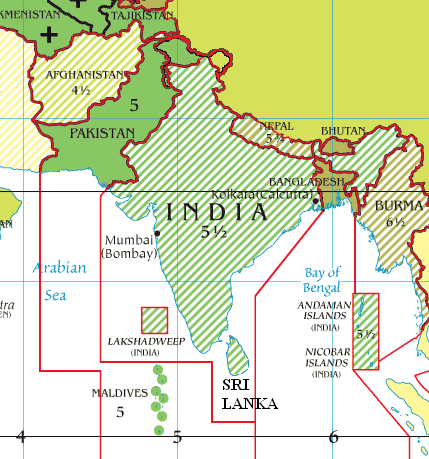|
Salyankot
Salyankot is a village development committee in Dhading District in the Bagmati Zone of central Nepal. At the time of the 1991 Nepal census The 1991 Nepal census was a widespread national census conducted by the Nepal Central Bureau of Statistics. Working with Nepal's Village Development Committees at a district level, they recorded data from all the main towns and villages of each ... it had a population of 4951 and had 945 houses in it. References Populated places in Dhading District {{Dhading-geo-stub ... [...More Info...] [...Related Items...] OR: [Wikipedia] [Google] [Baidu] |
Dhading District
Dhading District ( ), a part of Bagmati Province, is one of the seventy-seven districts of Nepal. The district, with Dhading Besi as its district headquarters, covers an area of , had a population of 338,658 in 2001 and 336,067 in 2011. Geography and climate Dhading District spreads from 27'40" E to 28'17" E and 80'17"N to 84'35"N. The mountain range Ganesh Himal is the predominant mountain range located within Dhading. Some of the peaks are over . The highest point in the district is 7,104-metre Pabil. The and the mountain Manaslu is clearly visible from much of Dhading, although it is located within the bounds of Gorkha. The transnational Prithivi Highway connecting Kathmandu and Pokhara runs through the southern portion of the district, making for easy access to the Kathmandu valley. The road parallels the Trishuli River. The western border with Gorkha is bisected by the Budigandaki River. The district is bounded by *East: Kathmandu, Rasuwa and Nuwakot *West: Gorkh ... [...More Info...] [...Related Items...] OR: [Wikipedia] [Google] [Baidu] |
Village Development Committee (Nepal)
A village development committee (; ''gāum̐ vikās samiti'') in Nepal was the lower administrative part of its Ministry of Federal Affairs and Local Development. Each district had several VDCs, similar to municipalities but with greater public-government interaction and administration. There were 3,157 village development committees in Nepal. Each village development committee was further divided into several wards () depending on the population of the district, the average being nine wards. Purpose The purpose of village development committees is to organise the village people structurally at a local level and creating a partnership between the community and the public sector for improved service delivery system. A village development committee has the status of an autonomous institution and the authority to interact with the more centralised institutions of governance in Nepal. In doing so, the village development committee gives the village people an element of contr ... [...More Info...] [...Related Items...] OR: [Wikipedia] [Google] [Baidu] |
Zones Of Nepal
Until the establishment of seven new provinces in 2015, Nepal was divided into 14 administrative zones ( Nepali: अञ्चल; ''anchal'') and 77 districts ( Nepali: जिल्ला; ''jillā''). The 14 administrative zones were grouped into five development regions ( Nepali: विकास क्षेत्र; ''vikās kṣetra''). Each district was headed by a chief district officer (CDO), who was responsible for maintaining law and order and coordinating the work of field agencies of the various government ministries. List From east to west: * Eastern Development Region: ** Mechi Zone, named after the Mechi River ** Kosi Zone, named after the Kosi River ** Sagarmatha Zone, named after Sagarmatha (Mount Everest) * Central Development Region: ** Janakpur Zone, named after its capital city ** Bagmati Zone, named after the Bagmati River ** Narayani Zone, named after the Narayani (lower Gandaki) River * Western Development Region: ** Gandaki Zone, named after the ... [...More Info...] [...Related Items...] OR: [Wikipedia] [Google] [Baidu] |
Bagmati Zone
Bagmati Zone ( ''Bāgmatī Añcal'') was one of the fourteen zones of Nepal until the restoration of zones to Provinces. Its headquarters are Kathmandu. It was named after the Bagmati River. It was in the Central Development Region of Nepal. The districts are now all part of Bagmati Province. The zone contains the Kathmandu Valley with its conurbation of 4.5 million inhabitants. Administrative subdivisions Bagmati was divided into eight districts; since 2015 these districts have been redesignated as part of Bagmati Province. See also * Development Regions of Nepal (Former) * List of zones of Nepal (Former) * List of districts of Nepal Districts in Nepal are second level of administrative divisions after Provinces of Nepal, provinces. Districts are subdivided into List of cities in Nepal, municipalities and List of gaupalikas of Nepal, rural municipalities. There are seven pro ... {{Authority control Zones of Nepal Newar 2015 disestablishments in Nepal ... [...More Info...] [...Related Items...] OR: [Wikipedia] [Google] [Baidu] |
Districts Of Nepal
Districts in Nepal are second level of administrative divisions after provinces. Districts are subdivided into municipalities and rural municipalities. There are seven provinces and 77 districts in Nepal. After the 2015 reform of administrative divisions, Nawalparasi District and Rukum District were respectively divided into Parasi District and Nawalpur District, and Eastern Rukum District and Western Rukum District. District officials District official include: * Chief District Officer, an official under Ministry of Home Affairs is appointed by the government as the highest administrative officer in a district. The C.D.O is responsible for proper inspection of all the departments in a district such as health, education, security and all other government offices. * District Coordination Committee acts as an executive to the District Assembly. The DCC coordinates with the Provincial Assembly to establish coordination between the Provincial Assembly and rural muni ... [...More Info...] [...Related Items...] OR: [Wikipedia] [Google] [Baidu] |
Hindu
Hindus (; ; also known as Sanātanīs) are people who religiously adhere to Hinduism, also known by its endonym Sanātana Dharma. Jeffery D. Long (2007), A Vision for Hinduism, IB Tauris, , pp. 35–37 Historically, the term has also been used as a geographical, cultural, and later religious identifier for people living in the Indian subcontinent. It is assumed that the term ''"Hindu"'' traces back to Avestan scripture Vendidad which refers to land of seven rivers as Hapta Hendu which itself is a cognate to Sanskrit term ''Sapta Sindhuḥ''. (The term ''Sapta Sindhuḥ'' is mentioned in Rig Veda and refers to a North western Indian region of seven rivers and to India as a whole.) The Greek cognates of the same terms are "''Indus''" (for the river) and "''India''" (for the land of the river). Likewise the Hebrew cognate ''hōd-dū'' refers to India mentioned in Hebrew BibleEsther 1:1. The term "''Hindu''" also implied a geographic, ethnic or cultural identifier for ... [...More Info...] [...Related Items...] OR: [Wikipedia] [Google] [Baidu] |
Nepal Time
Nepal Standard Time (NPT) is the time zone for Nepal. With a time offset from Coordinated Universal Time (UTC) of UTC+05:45 all over Nepal, it is one of only three time zones with a 45-minute offset from UTC.The others are Chatham Island Standard Time, with an offset of UTC+12:45, and the unofficial Australian Central Western Time, with an offset of UTC+08:45. Calculation NPT is an approximation of Kathmandu mean time, which is 5 hours, 41 minutes, and 16 seconds ahead of UTC. The standard meridian passes through the peak of Gaurishankar mountain about east of Kathmandu. History Nepal used local solar time until the year 1920, in Kathmandu UTC+05:41:16. In 1920, Nepal adopted Indian Standard Time Indian Standard Time (IST), sometimes also called India Standard Time, is the time zone observed throughout the Republic of India, with a time offset of UTC+05:30. India does not observe daylight saving time or other seasonal adjustments. I ..., UTC+05:30. In 1986 ... [...More Info...] [...Related Items...] OR: [Wikipedia] [Google] [Baidu] |
Nepal
Nepal, officially the Federal Democratic Republic of Nepal, is a landlocked country in South Asia. It is mainly situated in the Himalayas, but also includes parts of the Indo-Gangetic Plain. It borders the Tibet Autonomous Region of China China–Nepal border, to the north, and India India–Nepal border, to the south, east, and west, while it is narrowly separated from Bangladesh by the Siliguri Corridor, and from Bhutan by the States and union territories of India, Indian state of Sikkim. Nepal has a Geography of Nepal, diverse geography, including Terai, fertile plains, subalpine forested hills, and eight of the world's ten List of highest mountains#List, tallest mountains, including Mount Everest, the highest point on Earth. Kathmandu is the nation's capital and List of cities in Nepal, its largest city. Nepal is a multi-ethnic, multi-lingual, multi-religious, and multi-cultural state, with Nepali language, Nepali as the official language. The name "Nepal" is first record ... [...More Info...] [...Related Items...] OR: [Wikipedia] [Google] [Baidu] |
1991 Nepal Census
The 1991 Nepal census was a widespread national census conducted by the Nepal Central Bureau of Statistics. Working with Nepal's Village Development Committees at a district level, they recorded data from all the main towns and villages of each district of the country. The data included statistics on population size, households, sex and age distribution, place of birth, residence characteristics, literacy, marital status, religion, language spoken, caste/ethnic group, economically active population, education, number of children, employment status, and occupation. This census was followed by the 2001 Nepal census. References See also * List of village development committees of Nepal (Former) * 2001 Nepal census * 2011 Nepal census Censuses in Nepal Nepal Nepal, officially the Federal Democratic Republic of Nepal, is a landlocked country in South Asia. It is mainly situated in the Himalayas, but also includes parts of the Indo-Gangetic Plain. It borders the Tibe ... [...More Info...] [...Related Items...] OR: [Wikipedia] [Google] [Baidu] |
Digital Himalaya
The Digital Himalaya project was established in December 2000 by Mark Turin, Alan Macfarlane, Sara Shneiderman, and Sarah Harrison. The project's principal goal is to collect and preserve historical multimedia materials relating to the Himalaya, such as photographs, recordings, and journals, and make those resources available over the internet and offline, on external storage media. The project team has digitized older ethnographic collections and data sets that were deteriorating in their analogue formats, to protect them from deterioration and make them available and accessible to originating communities in the Himalayan region and a global community of scholars. The project was founded at the Department of Anthropology of the University of Cambridge, moved to Cornell University in 2002 (when a collaboration with the University of Virginia was initiated), and then back to the University of Cambridge in 2005. From 2011 to 2014, the project was jointly hosted between the Unive ... [...More Info...] [...Related Items...] OR: [Wikipedia] [Google] [Baidu] |

